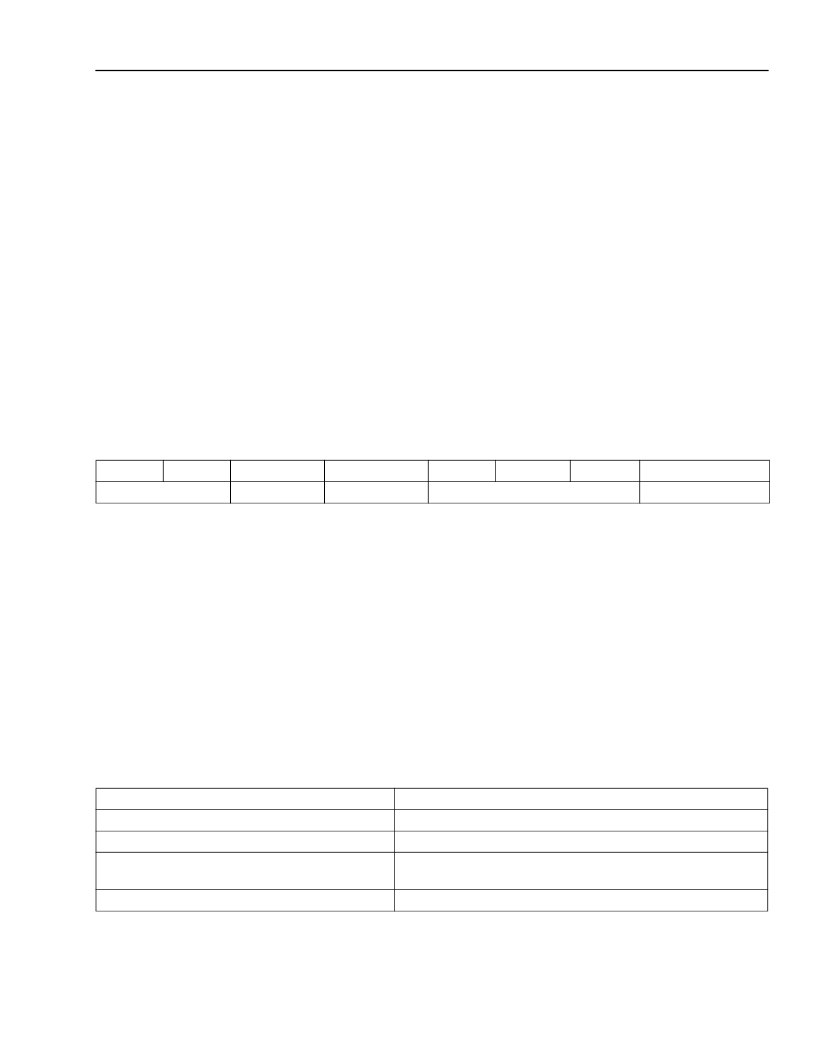- 您現(xiàn)在的位置:買賣IC網(wǎng) > PDF目錄371187 > TMXF28155 TMXF28155 Super Mapper 155/51 Mbits/s SONET/SDH x28/x21 DS1/E1 PDF資料下載
參數(shù)資料
| 型號: | TMXF28155 |
| 英文描述: | TMXF28155 Super Mapper 155/51 Mbits/s SONET/SDH x28/x21 DS1/E1 |
| 中文描述: | TMXF28155超級映射五十一分之一百五十五Mbits /秒的SONET / SDH x28/x21的DS1/E1 |
| 文件頁數(shù): | 443/606頁 |
| 文件大小: | 9520K |
| 代理商: | TMXF28155 |
第1頁第2頁第3頁第4頁第5頁第6頁第7頁第8頁第9頁第10頁第11頁第12頁第13頁第14頁第15頁第16頁第17頁第18頁第19頁第20頁第21頁第22頁第23頁第24頁第25頁第26頁第27頁第28頁第29頁第30頁第31頁第32頁第33頁第34頁第35頁第36頁第37頁第38頁第39頁第40頁第41頁第42頁第43頁第44頁第45頁第46頁第47頁第48頁第49頁第50頁第51頁第52頁第53頁第54頁第55頁第56頁第57頁第58頁第59頁第60頁第61頁第62頁第63頁第64頁第65頁第66頁第67頁第68頁第69頁第70頁第71頁第72頁第73頁第74頁第75頁第76頁第77頁第78頁第79頁第80頁第81頁第82頁第83頁第84頁第85頁第86頁第87頁第88頁第89頁第90頁第91頁第92頁第93頁第94頁第95頁第96頁第97頁第98頁第99頁第100頁第101頁第102頁第103頁第104頁第105頁第106頁第107頁第108頁第109頁第110頁第111頁第112頁第113頁第114頁第115頁第116頁第117頁第118頁第119頁第120頁第121頁第122頁第123頁第124頁第125頁第126頁第127頁第128頁第129頁第130頁第131頁第132頁第133頁第134頁第135頁第136頁第137頁第138頁第139頁第140頁第141頁第142頁第143頁第144頁第145頁第146頁第147頁第148頁第149頁第150頁第151頁第152頁第153頁第154頁第155頁第156頁第157頁第158頁第159頁第160頁第161頁第162頁第163頁第164頁第165頁第166頁第167頁第168頁第169頁第170頁第171頁第172頁第173頁第174頁第175頁第176頁第177頁第178頁第179頁第180頁第181頁第182頁第183頁第184頁第185頁第186頁第187頁第188頁第189頁第190頁第191頁第192頁第193頁第194頁第195頁第196頁第197頁第198頁第199頁第200頁第201頁第202頁第203頁第204頁第205頁第206頁第207頁第208頁第209頁第210頁第211頁第212頁第213頁第214頁第215頁第216頁第217頁第218頁第219頁第220頁第221頁第222頁第223頁第224頁第225頁第226頁第227頁第228頁第229頁第230頁第231頁第232頁第233頁第234頁第235頁第236頁第237頁第238頁第239頁第240頁第241頁第242頁第243頁第244頁第245頁第246頁第247頁第248頁第249頁第250頁第251頁第252頁第253頁第254頁第255頁第256頁第257頁第258頁第259頁第260頁第261頁第262頁第263頁第264頁第265頁第266頁第267頁第268頁第269頁第270頁第271頁第272頁第273頁第274頁第275頁第276頁第277頁第278頁第279頁第280頁第281頁第282頁第283頁第284頁第285頁第286頁第287頁第288頁第289頁第290頁第291頁第292頁第293頁第294頁第295頁第296頁第297頁第298頁第299頁第300頁第301頁第302頁第303頁第304頁第305頁第306頁第307頁第308頁第309頁第310頁第311頁第312頁第313頁第314頁第315頁第316頁第317頁第318頁第319頁第320頁第321頁第322頁第323頁第324頁第325頁第326頁第327頁第328頁第329頁第330頁第331頁第332頁第333頁第334頁第335頁第336頁第337頁第338頁第339頁第340頁第341頁第342頁第343頁第344頁第345頁第346頁第347頁第348頁第349頁第350頁第351頁第352頁第353頁第354頁第355頁第356頁第357頁第358頁第359頁第360頁第361頁第362頁第363頁第364頁第365頁第366頁第367頁第368頁第369頁第370頁第371頁第372頁第373頁第374頁第375頁第376頁第377頁第378頁第379頁第380頁第381頁第382頁第383頁第384頁第385頁第386頁第387頁第388頁第389頁第390頁第391頁第392頁第393頁第394頁第395頁第396頁第397頁第398頁第399頁第400頁第401頁第402頁第403頁第404頁第405頁第406頁第407頁第408頁第409頁第410頁第411頁第412頁第413頁第414頁第415頁第416頁第417頁第418頁第419頁第420頁第421頁第422頁第423頁第424頁第425頁第426頁第427頁第428頁第429頁第430頁第431頁第432頁第433頁第434頁第435頁第436頁第437頁第438頁第439頁第440頁第441頁第442頁當前第443頁第444頁第445頁第446頁第447頁第448頁第449頁第450頁第451頁第452頁第453頁第454頁第455頁第456頁第457頁第458頁第459頁第460頁第461頁第462頁第463頁第464頁第465頁第466頁第467頁第468頁第469頁第470頁第471頁第472頁第473頁第474頁第475頁第476頁第477頁第478頁第479頁第480頁第481頁第482頁第483頁第484頁第485頁第486頁第487頁第488頁第489頁第490頁第491頁第492頁第493頁第494頁第495頁第496頁第497頁第498頁第499頁第500頁第501頁第502頁第503頁第504頁第505頁第506頁第507頁第508頁第509頁第510頁第511頁第512頁第513頁第514頁第515頁第516頁第517頁第518頁第519頁第520頁第521頁第522頁第523頁第524頁第525頁第526頁第527頁第528頁第529頁第530頁第531頁第532頁第533頁第534頁第535頁第536頁第537頁第538頁第539頁第540頁第541頁第542頁第543頁第544頁第545頁第546頁第547頁第548頁第549頁第550頁第551頁第552頁第553頁第554頁第555頁第556頁第557頁第558頁第559頁第560頁第561頁第562頁第563頁第564頁第565頁第566頁第567頁第568頁第569頁第570頁第571頁第572頁第573頁第574頁第575頁第576頁第577頁第578頁第579頁第580頁第581頁第582頁第583頁第584頁第585頁第586頁第587頁第588頁第589頁第590頁第591頁第592頁第593頁第594頁第595頁第596頁第597頁第598頁第599頁第600頁第601頁第602頁第603頁第604頁第605頁第606頁

Preliminary Data Sheet
May 2001
TMXF28155/51 Super Mapper
155/51 Mbits/s SONET/SDH x28/x21 DS1/E1
443
Agere Systems Inc.
19 VT/TU Mapper Functional Description
(continued)
5. If an increment is requested, the pointer bytes, V1 and V2, are programmed with the I-bits inverted. The
pointer action byte, V3, will be programmed to the selected default (microprocessor bit
SMPR_FXD_STFF_DEFLT (
Table 67
)), as well as the byte directly following V3. However, when incrementing
from 139 to 0 for VT2 mapping, the pointer generator sends out NDF-V indication with the correct pointer (0)
instead of the increment indication.
6. If a decrement is requested, the pointer bytes, V1 and V2, will be programmed with the D bits inverted. The
pointer action byte, V3, will be programmed to actual customer data. However, when decrementing from 0 to
139 for VT2 mapping, the pointer generator sends out NDF-V indication with the correct pointer (139) instead
of the decrement indication.
7. The V4 byte will be programmed to the selected overhead default (microprocessor bit SMPR_OH_DEFLT) for
all mappings.
—
If transmit AIS-V is requested, V1~V4 will be forced to 0xFF.
Overhead Byte Generation (V5, J2, Z6/N2, Z7/K4, and O bits).
This portion of the VTGEN logic block will gener-
ate and insert the V5, J2, Z6/N2, and Z7/K4 overhead bytes into the appropriate virtual tributary. O bits are only
accessible in the asynchronous and bit synchronous modes.
V5 Overhead Byte Format/Generation.
The V5 overhead byte will be mapped as defined in
Table 559
.
Table 559. V5 Overhead Byte Format
The following features are supported:
I
When operating in tributary loopback mode (bit VT_LB_SEL[1
—
28] = 1 (
Table 198
)), all bits are simply passed
through transparently.
I
When operating in UPSR mode VT_V5_INS[1
—
28] = 1 (
Table 199
), only a new BIP-2 and signal label is gener-
ated and inserted while all other bits are programmed from the received LOPOH serial access channel storage.
BIP-2 will be automatically calculated and inserted. The signal label is determined based on bits
VT_TX_MAPTYPE[1
—
28][3:0] (
Table 198
) and automatically inserted.
I
AIS-V is forced by setting bit, VT_AIS_INS[1
—
28] (
Table 198
) to a 1. AIS-V consists of overwriting the entire VT,
including V1~4, with all ones.
I
Bits VT_TX_MAPTYPE[1
—
28][3:0] may be programmed to insert an UNEQ-V signal label. See
Table 562, VT
Signal Label Definition on page445
.
I
User-controlled bits VT_BIP2ERR_INS[1
—
28][1:0] (
Table 199
) will force BIP-2 errors for troubleshooting pur-
poses. See
Table 560
below for error insertion modes.
Table 560. BIP-2 Error Insertion Modes
Bit 1
Bit 2
Bit 3
REI-V
Bit 4
RFI-V
Bit 5
Bit 6
Bit 7
Bit 8
RDI-V
BIP-2
SIGNAL LABEL
VT_BIP2ERR_INS[1
—
28][1:0]
(See
Table 199
.)
00
01
10
Action
No BIP-2 errors inserted.
Insert continuous BIP-2 errors.
Insert BIP-2 errors based on microprocessor register bit
SMPR_BER_INSRT (
Table 65
).
No BIP-2 errors inserted.
11
相關(guān)PDF資料 |
PDF描述 |
|---|---|
| TMXF84622 | TMXF84622 155 Mbits/s/622 Mbits/s Interface SONET/SDH x84/x63 Ultramapper |
| TN2-L-H-3V | SLIM POLARIZED RELAY |
| TN2-L-H-48V | SLIM POLARIZED RELAY |
| TN2-L-H-4V | SLIM POLARIZED RELAY |
| TN2-L-H-5V | SLIM POLARIZED RELAY |
相關(guān)代理商/技術(shù)參數(shù) |
參數(shù)描述 |
|---|---|
| TMXF281553BAL2 | 制造商:Alcatel-Lucent 功能描述: 制造商:Lucent 功能描述: |
| TMXF281553BAL3C | 制造商:Agere 功能描述: 制造商:AGERE 功能描述: |
| TMXF281553BAL-3C-DB | 制造商:LSI Corporation 功能描述:Mapper E1 SONET/SDH 51Mbps/155Mbps 3.3V 456-Pin BGA Bag 制造商:LSI 功能描述:Mapper E1 SONET/SDH 51Mbps/155Mbps 3.3V 456-Pin BGA Bag |
| TMXF336251BL-3-DB | 制造商:LSI Corporation 功能描述:Mapper DS3/E3/DS0/E0 SONET/SDH 155Mbps/622Mbps 1.5V/3.3V 1152-Pin BGA Bag 制造商:LSI 功能描述:Mapper DS3/E3/DS0/E0 SONET/SDH 155Mbps/622Mbps 1.5V/3.3V 1152-Pin BGA Bag |
| TMXF84622 | 制造商:AGERE 制造商全稱:AGERE 功能描述:TMXF84622 155 Mbits/s/622 Mbits/s Interface SONET/SDH x84/x63 Ultramapper |
發(fā)布緊急采購,3分鐘左右您將得到回復(fù)。